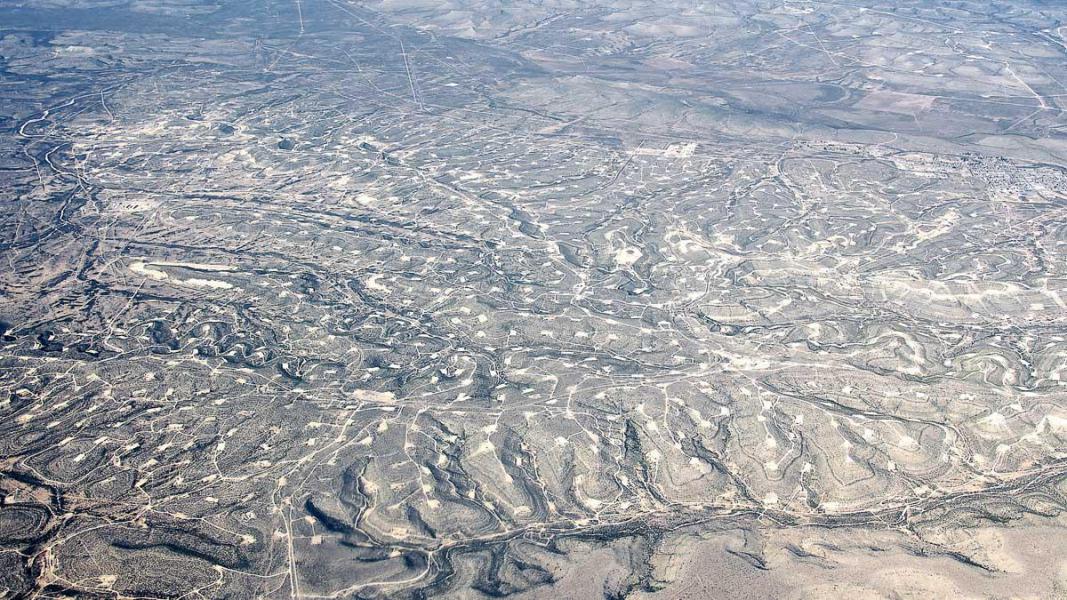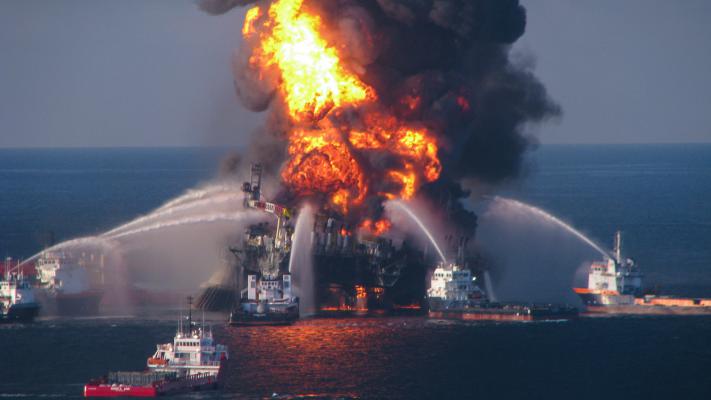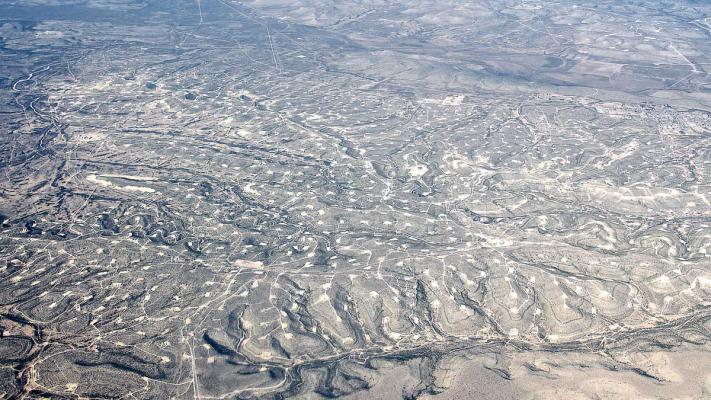Tom Kenis heeft een achtergrond in Islamstudies en Internationale Betrekkingen. Hij woonde en werkte vier jaar in het Midden-Oosten en in Berlijn.
Peak oil 2.0: demand dries up
With Trump’s inauguration days away, environmentalists are bracing for the worst. After eight years of Obama, with his emphasis on renewable sources, a lot has changed. Despite being surrounded by fossil fuel tycoons and climate change deniers, his successor will have arrived too late to save the oil industry. To understand why, we need look a lot further back in time than the Obama administration, and explore a barely acknowledged foe.
Much of human civilization is powered by a seemingly infinite supply of cheap oil and gas. Humans use it for heating, the production of electricity to power hospitals, charge iPhones, drive to jobs and supermarkets, produce plastic bags for groceries, indeed; every aspect of food production. Modern life runs on oil.
Peak oil: a theory as old as oil exploration itself.
From the start of the oil age, economists fretted what would happen if the world ran out of this precious resource. The term “peak oil” was coined in 1919 by David White, chief geologist of the United States Geological Survey. He thought, as we know incorrectly, that: ‘the peak of production will soon be passed, possibly within 3 years.’ After that, production was set to terminally decline.
Peak oil and with it, exorbitant fuel prices, were said to have unprecedented dramatic consequences. In developed economies, workers living in remote suburbs would no longer be able to reach their places of work. Developed and developing nations alike would see disruptions in the food supply, social upheaval, famine, and ultimately; violent conflict. An international dash for increasingly dear oil would soon turn those conflicts into a global conflagration. In short: a civilization built on oil could not survive running out of the stuff.

Sheikh Nawaf Al-Ahmad Al-Jaber Al-Sabah, Crown Prince of Kuwait
Kuwaitelections2012
Dry run
An actual production peak, as far as the United States was concerned, occurred between 1965 and 1971. The country evaded a breakdown of modernity by becoming even more reliant on Middle East oil. The following brief but acute 1973 oil crisis, political rather than geological in nature, served to underscore the perils of this dependency. It was not, however, enough to change course.
On the global level, according to the Association for the Study of Peak Oil and Gas (ASPO), the peak of new oilfield discoveries occurred in the 1960s, with the rate of discovery declining since. The Energy Watch Group, a (renewable) energy think tank, has claimed that worldwide oil discoveries have been less than what was being pumped up every year since 1980. The Scientific American of March 1998 announced ‘The End of Cheap Oil’, predicting global oil production was set to peak, “probably within 10 years.”
Peak uncertainty
Little agreement exists on the topic of peak oil. Different benchmarks produce different scenarios as to whether or when peak oil occurs. The most dangerous aspect of the phenomenon however is psychological. Markets often don’t react to facts, but to impressions and rumors, which could go a long way in explaining the relative dearth of peak oil articles in mainstream news outlets, keeping peak oil squarely in the realm of the semi-mythical. The moment panic sets in, it won’t matter how much actual oil there is. Like a self-fulfilling prophesy, prices spike regardless, with all the dislocation and chaos that it entails.
The moment panic sets in, it won’t matter how much actual oil there is. Like a self-fulfilling prophesy, prices spike regardless, with all the dislocation and chaos that it entails.
Secondly, oil companies have been known to overstate their proven reserves. Other discrepancies arise from the self-reported numbers of OPEC, whose quota system allows greater output for countries with greater reserves. Conversely, it has been argued that oil companies and oil producing nations have an interest in making oil seem more, not less rare than it really is to justify higher prices.
Thirdly, estimates of extractable reserves change depending on price. When oil prices dip, difficult to extract crude –underneath the North Pole, say, or lodged in bituminous Canadian deposits- cannot be economically exploited. Oil companies should, but don’t always take these ‘un-pumpable’ reserves off the ledger. In 2016, the US Securities and Exchange Commission accused ExxonMobil of just that. This shady waltz of supply and demand has made it exceedingly difficult to pinpoint the moment the world economy will run out of the precious elixir. If it exists at all, peak oil is not static. It continuously shifts back and forth in time.

blake.thornberry (CC BY-NC-ND 2.0)
Planning for the rarely thought of
Doubts about the reality of peak oil haven’t stopped policy makers from planning for the day. Concerns regarding the global supply of oil in the 1998-2001 period triggered a serious debate in US foreign policy circles about potential counter-measures. In 2000, the Center for Strategic and International Studies (CSIS) reported that in light of declining production elsewhere, coupled with increased global demand, the Middle East would need to expand its output ‘by almost 80 percent during 2000-2020’. The report focused on Iraq and Iran as a potential fix for the enormous gap emerging between production and demand.
In 2001 a study sponsored by the James Baker III Institute for Public Policy and the Council on Foreign Relations underscored the need for the United States to take the lead in fixing what was labeled ‘tight supply due to underinvestment in new production capacity’ by nationalized oil companies and volatile states. Iraq was singled out as a “swing producer”. Its untapped capacity was to be ‘unlocked’, no matter the cost. The Bush-Cheney administration, dominated by oil industry veterans, turned the idea into policy.
In his 2007 book The Age of Turbulence, former US Federal Reserve Chairman Alan Greenspan stated: ‘I am saddened that it is politically inconvenient to acknowledge what everyone knows: that the Iraq war is largely about oil.’ In other words, armed conflict to gain control over diminishing world supplies had already begun; the very definition of peak oil.
Between Iraq and a hard place
Iraq took much longer than planned to stabilize and increase its oil exports. In addition, according to Mark C. Lewis, former head of energy research at Deutsche Bank, like other Middle East producer nations, Iraq’s rapidly rising population was increasingly consuming oil otherwise destined for underserved international markets. Ironically, the “peak oil war” of 2003 actually preceded the very real peak prices of 2008.

Texas
Luis Jou García (CC BY-NC 2.0)
Subprime mortgages
In May 2008, oil prices peaked at over $135 a barrel. Expensive oil was not the cause of the financial crisis, but a 2012 Berkely study suggested that when prices more than doubled between late 2006 and 2008, higher costs for commuting made suburban homes less valuable and thus, mortgages less affordable, especially for already at risk low-income homeowners. Data showed that default rates were indeed higher in commuter towns. The precarious calculus of providing ever-easier credit needed only a small push to dive headlong into the abyss. Dear oil provided just that push.
Despite staggering subsidies handed out to fossil fuel production and consumption, the economic case for solar and wind has become ironclad.
While the violence of the 2003 Iraq war ripples on to this day, something unexpected happened. After 2008, the US economy slowly recovered. Oil prices did not. Expensive oil had spurred investment in hitherto difficult or impossible to extract oil and gas deposits, but also in energy efficiency and renewables like solar and wind. Something similar had happened during the brief oil shock thirty-five years earlier. Back then the developed world resumed its gas-guzzling ways shortly after. Not this time around.
With the German government taking the lead in the late nineties, subsidies have helped relatively expensive solar and wind to mature and become profitable in their own right. The transition has by no means been easy. Old, centralized utilities are still struggling to adapt, and challenges remain, notably in economically storing and managing power from intermittent sources. Despite staggering subsidies handed out to fossil fuel production and consumption ($5.3 trillion annually, according to a 2014 IMF estimate), the economic case for solar and wind has become ironclad. Going green and making green are no longer mutually exclusive.

Thomas Hawk (CC BY-NC 2.0)
Peak oil 2.0: Damned demand
Between the oilmen-dominated Bush administration and the incoming fossil-focused Trump team, eight years have passed. If we are to consider the 2008 price spike and financial meltdown a peak oil event, the world energy outlook couldn’t look more different today. These days the International Energy Agency, BP’s Executive Vice President Dev Sanyal, Statoil Chief Executive Officer Eldar Saetre, and others, are no longer talking of peak supply, but of peak oil demand.
While some emerging nations are busy repeating developed world mistakes, others are leapfrogging into decentralized sustainable micro grids. In China, Europe, and the US, electric vehicles, still a niche, seem poised for mass adoption. A Bloomberg estimate indicates electric cars could diminish oil demand by 2 million barrels a day within the next five years. That doesn’t augur well for an oil market already reeling due to a surplus of little over 1 million barrels a day. Investors who aren’t fleeing yet, should pay heed. The (financial) implosion gripping the coal industry, isn’t too far off for oil.
If we imagined, as Trump does, that global warming is a hoax, then the oil industry would still be headed for the exit sooner than most expect. George Monbiot, an environmental writer, proclaimed: ‘There is more than enough oil for capitalism to deep-fry the world with climate change.’ Turns out the truth is, we can’t afford to. Literally. And that is something even a science-averse American president cannot change.
Maak MO* mee mogelijk.
Word proMO* net als 2793 andere lezers en maak MO* mee mogelijk. Zo blijven al onze verhalen gratis online beschikbaar voor iédereen.
Meer verhalen
-
Report
-
Report
-
Report
-
Interview
-
Analysis
-
Report

















 Oxfam België
Oxfam België Handicap International
Handicap International